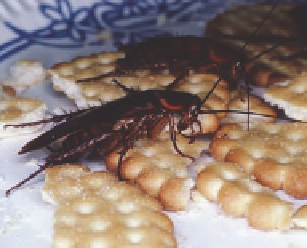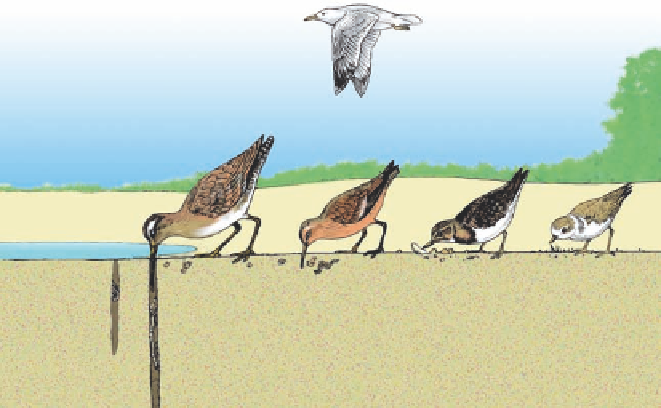Environmental Engineering Reference
In-Depth Information
Cockroaches: Nature's Ultimate Survivors
Cockroaches (Fig-
ure 4A), the bugs
many people love
to hate, have been
around for 350
million years. One
of evolution's
great success stories, they have
thrived because they are
generalists.
The earth's 3,500 cockroach
species can eat almost anything, in-
cluding algae, dead insects, finger-
nail clippings, salts in tennis shoes,
electrical cords, glue, paper, and
soap. They can also live and breed
almost anywhere except in polar
regions.
Some cockroach species can go
for months without food, survive
for a month on a drop of water
from a dishrag, and withstand
massive doses of radiation. One
species can survive being frozen for
48 hours.
Cockroaches usually can evade
their predators (and a human foot
in hot pursuit) because most
species have antennae that can
detect minute movements of air,
vibration sensors in their knee
joints, and rapid response times
(faster than you can blink). Some
even have wings.
productive rate helps them quickly
develop genetic resistance to almost
any poison we throw at them.
Most cockroaches sample food
before it enters their mouths, so they
learn to shun foul-tasting poisons.
They also clean up after themselves
by eating their own dead and, if
food is scarce enough, their living.
Only about 25 species of cock-
roach live in homes. Unfortunately,
such species can carry viruses and
bacteria that cause diseases such as
hepatitis, polio, typhoid fever,
plague, and salmonella. They can
also cause people to have allergic
reactions ranging from watery
eyes to severe wheezing. About
60% of Americans suffering from
asthma are allergic to live or dead
cockroaches.
SCIENCE
SPOTLIGHT
Figure 4A
As generalists, cockroaches
are among the earth's most adaptable
and prolific species.
They also have high reproduc-
tive rates. In only a year, a single
Asian cockroach (especially preva-
lent in Florida) and its offspring
can add about 10 million new cock-
roaches to the world. Their high re-
Critical Thinking
If you could, would you extermi-
nate all cockroach species? What
might be some ecological conse-
quences of this action?
different types of beaks specialized to feed on food
sources such as specific types of insects, nectar from
particular types of flowers, and certain types of seeds
and fruit (Figure 4-6, p. 70).
Limits on Adaptation
A population's ability to adapt to new environmental
conditions is limited by its gene pool and the speed
with which it can reproduce.
Will adaptations to new environmental conditions in
the not too distant future allow our skin to become
more resistant to the harmful effects of ultraviolet radi-
ation, our lungs to cope with air pollutants, and our
liver to better detoxify pollutants? The answer is
no
be-
cause of two limits to adaptations in nature.
Herring gull is a
tireless scavenger
Dowitcher probes deeply
into mud in search of
snails, marine worms,
and small crustaceans
Ruddy turnstone searches
under shells and pebbles
for small invertebrates
Piping plover feeds
on insects and tiny
crustaceans on
sandy beaches
Knot (a sandpiper)
picks up worms and
small crustaceans left
by receding tide
Figure 4-5
Natural capital:
specialized feeding niches of
various bird species in a coastal wetland. Such resource
partitioning reduces competition and allows sharing of limited
resources.
(Birds shown here are not drawn to scale)







